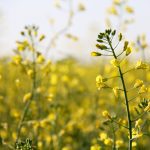
Nitrogen use in corn re-examined
Research from the U.S. Midwest sparks controversy, but the solution may be easier

Mycotoxin situation returns in 2023
The good news is that it wasn’t as bad as other years

Rotational advantages
More is uncovered about the long-term benefits of crop rotation

Biological control could help reduce tar spot challenges
Recent work studies the impact of Alternaria on impeding disease

Growth in canola processing to pull production forward
Winter canola yields top Canola Canada for third year in a row

Berry pomace shows promise in poultry feed
Research shows the additive could prevent diseases in chickens and improve overall health

Ontario grew more winter canola in 2023
Overall outlook sees high demand and strong prices heading into 2024

Sequence of oat genome a major step forward
The question now is how to use the information to drive oat production in Eastern Canada

Taking the bite out of cold-weather livestock care
Strategies for keeping calves warm and healthy

Perspectives on farming in the Great Clay Belt
There are issues with infrastructure and soils as well as location

